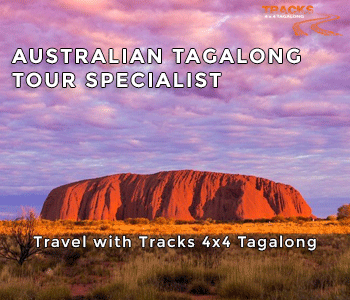BLAZE FARRENDER can’t believe his ears as he discusses the healing secrets of music and sound with the director of the Tomatis Method in Australia, Francoise Nicoloff…
Personally trained by Dr Alfred Tomatis, French-born Francoise Nicoloff relocated to Australia in 1995 & has a thriving private practice in Edgecliff in Sydney’s inner east. A registered psychologist trained in EMDR and certified Tomatis consultant since 1978, she has been president of the International Tomatis Association since 2004 and regularly travels to Brisbane, Perth, Adelaide & Melbourne for workshops and one-on-one sessions, as well as overseas for Tomatis conferences and to meet other Tomatis practitioners around the world.
Very early in your life you had direct contact with Dr Alfred Tomatis – what was it about him which inspired you to follow his therapies as a full-time vocation?
What happened is my mother heard a radio program interviewing Dr Tomatisand what he said made so much sense to her – so we got a cassette of the interview and listened to it. Tomatis was explaining the difference between listening and hearing – then a few months later my grandmother was mentally unwell and it was for her to enter a psychiatric ward – she strongly refused it and asked to see Dr Tomatis. She went to Paris, stayed for three weeks, did his program and came back in much better shape.
Not long after that, my youngest brother had a car accident and was left with post-traumatic stress disorder (PTSD). My parents decided to send him to Paris to see Dr Tomatis. Again after just three weeks he came back – and he was totally transformed. For a child who could be diagnosed today as ADHD, a very bright kid who could not sit still and concentrate and who would drive his teachers crazy, he started to calmly study and prepare for his exams even using study cards to organise his education.
At that time I was working on cruise ships as excursion manager and was interested in what Tomatis was saying about languages. As my two brothers had undertaken the Tomatis program, I used my holidays to experience the course for myself – and as soon as Dr Tomatis saw my listening test, he said “you are so lucky – you’ve got a Russian ear” – which means that I had an ear for languages. Three months later I was sent by my cruise ship company to do some marketing in Paris and I took the opportunity to complete my program and to start Spanish training with the Tomatis Method.
Seeing the evolution of both adults and children who were attending Dr Tomatis’s clinic, I was inspired to work with him.
How does the Tomatis Method help children?
As a short answer, the Tomatis Method helps children by repatterning the connections between the ear, the brain and the body – creating dynamic change between perception, processing, learning and emotions.
The Tomatis Method works by reprogramming the connections between the ear and the brain – can you explain what happens and how it happens?
The voice can only reproduce what the ear hears and processes – this is the first Tomatis principle. Children who have trouble in listening, trouble in speaking, trouble in learning often have a dysfunction in the nervous connections between the ear, the brain and the body. And the soul also. By retraining the tiny muscles in the middle ear, and reorganising the connections from the inner ear to the brain, thanks to the music of Mozart – often referred to as The Mozart Effect – as well as the ear and body connections, the Tomatis Method revisits the chronological evolutionary phases of maturity and consciousness – and integrated listening.
Why is the music of Mozart used mostly for Tomatis Method sessions? Are there other composers whose music can also work?
Dr Tomatis spent a great deal of time experimenting with the music of Bach, Haydn (which he loved), Beethoven and Salieri, but he concluded that those musicians couldn’t have the same therapeutic effect as Mozart. Although Mozart is influenced by some of the musical forms in use at the end of the 18th century, his music transcends them. For Tomatis, Mozart is not a musician that belongs to a specific period or to a specific place, because Mozart is universal, that is, his music has the power to touch anyone regardless of time or place.
I have been able to verify this universal aspect of the music of Mozart working in countries so different with their language and culture such as France and Japan or Indonesia or the Philippines and Tahiti or Australia. My colleagues are working in over 40 countries around the world and benefit from the same results in their practices.
Tomatis described Mozart as endowed with a “cerebral transistor” able to capture what creation and the environment were dictating to him.
There’s a bit in Dr Tomatis’s book, where he says about Mozart: “He was Austrian for sure, but he belonged to all times and places. He lived in the sky on his own orbit. He never came down. He lived immersed in the memory of that immensity that eternity unveils for us sometimes to prove that it exists … He knew how to lead humankind to a place where only beauty, transcendence and joy of living existed … when we are listening to Mozart, every one of us is launched into the cosmos in order to discover one’s own orbit.”
Tomatis tested a broad spectrum of music — classical or modern, traditional or contemporary — for therapeutic purposes. He also used “ethnic” music from the Far East, India and Africa for the same purpose, but was led to the conclusion that Mozart was superior for therapeutic use.
What’s the difference between hearing and listening?
The difference lies in the fact that hearing is a passive function of the ear, which means that the ear can receive any sound in the human auditory spectrum. Whereas listening is the possibility of hearing those sounds and to transmit them to the brain so that the mind can process them and make meaning – involving the body, emotions and will. So listening is a dynamic, active process and is a function of the brain.
Listening is the ability to select and decipher the raw sounds that we are receiving – so if there’s a dysfunction at the level of listening, comprehension and expression can be compromised. Therefore processing and learning are also inhibited or distorted.
You started your practice over 30 years ago – what keeps you motivated?
There is a constant stream of people who need help in their lives, whether it’s adults with depression or anxiety, or other emotional states that they just can’t shake such as anger or abandonment issues. Then conditions such as learning difficulties often don’t just affect children but adults too.
My focus is also on children with learning difficulties, speech delay or behavioural difficulties knowing that if you help a child at an early age, you give him/her the chances to be an accomplished adult. This helps also the country you live in – by enabling many individuals to lead happier or more enriching lives, then from my perspective as a migrant, it’s a way to contribute towards making Australia a better place.
What’s on your agenda for 2010?
Well like any year, you always set your agenda for the year and then chew like crazy. In my Sydney clinic I’ll be very busy seeing both adults and children who can benefit from the Tomatis method, plus I’ll be making trips to Perth, Brisbane, and more.
Plus I have some new technology for practitioners, psychologists and therapists who have not been associated with Tomatis before, which with a few days’ training will enable qualified therapists to use this new methodology called the SoListen program.
So this SoListen technology you’re launching in Australia which is aimed at psychologists, therapists and practitioners – what else can you tell us about the equipment?
Combined with special headphones, SoListen provides pre-programmed, selected and processed music to stimulate the auditory processing system. But the difference of Solisten from all other listening programs is in providing channels, an electronic gating system and delays.
The channels, gating system and delays allow the inner muscles to unconsciously contract and relax – as any muscles should do. This stimulation system has made the reputation of Dr Tomatis and helped millions of people overseas achieve great results.
The bone conduction on the headphones sends the information – the sound – to the brain before the ear has been able to receive it. It allows the brain to anticipate the sound and to better analyze it. After the sessions, the brain is able to replicate this analysis without delay.
When you meet other Tomatis Method practitioners at international conferences, are there direct benefits to your work?
In all professional areas, it is vital to keep at the cutting edge of news and developments. So the annual conferences where Tomatis Method practitioners can gather, is crucial not just to our professional knowledge, but for improving the opportunity to work collaboratively, for example in rolling out the new SoListen technology to practitioners and therapists who are not existing Tomatis Method operators.
Since the emergence of ADHD have you had an increase in the amount of parents seeking you out to treat this in children? What do they say about ADHD? How can you help them?
Quite a lot of families don’t want to go through the conventional medical models of treatment and don’t want to put their children on medication from an early age, therefore they seek answers in the natural and holistic therapy industry. The Tomatis Method is certainly one treatment they seek out, and the results are very positive when combined with other holistic modalities.
Claims of healing solutions for Autism spark heated debate around the world, is there anything you can add from the Tomatis perspective to further inflame this controversial subject?
The debate is still open about the origins of autism. There is new research suggesting that autism and ADHD may stem from the third trimester of pregancy due to the mothers undergoing a great deal of stress which then has an impact on the baby. Research has shown that auditory processing disorder or related difficulties are one of the aspects of autism.
In your work helping both children and adults with Learning Difficulties, what are some of the main symptoms?
People who have learning difficulties, either children or adults, they often have a problem in processing the information, that means that there is a distortion between what comes in the ear, and the way it is processed to the brain and therefore what can be expressed through the mouth – through oral expression. From receiving the information, a dysfunctional ear, which may not be a dysfunctional ear in terms of hearing, but at the level of processing and listening, creates a distortion between the ear and the brain.
What strategies will people encounter to tackle Learning Difficulties through the Tomatis Method?
So what the Tomatis Method does is to repattern the nervous connections between the ear, the brain and the body – because the body is also involved in the processing of the information. It helps people to read better, to concentrate better, to learn better, but first and most importantly is assisting the ability to understand what is being expressed or read or said.
Are there things the Tomatis Method cannot help, or is not allowed to help – out of the things that people approach you for?
Severe mental health issues such as schizophrenia – we will still do an assessment for people because sometimes there are other ways to address the difficulties and I have many tools in my toolbox as a psychologist.
In my discussions with you, you stress the scientific approach to Tomatis, distancing yourself from the more new age end of the holistic therapy industry. Is there further reading, whether online or through books that people can turn to in order to learn more about the Tomatis Method?
The Tomatis Association, through its research committee, has an online journal called Ricochet. There are a few books written by Dr Tomatis which are translated into English such as The Conscious Ear, The Ear and the Voice, and The Ear and Language. Also Don Campbell, the author of The Mozart Effect, writes a great deal about Dr Tomatis’ work. And I’m writing a book on the process which I aim to have finished later this year.
Is there any government assistance in Australia, through Medicare or other ways, for people who require your treatment but cannot afford it? If not now, is there a possibility of that in the future?
Unfortunately no, as a holistic therapy there is no government funding in place. Realistically this is not going to change in the near future – but people are still coming and funding it themselves. We’d love it to happen for the benefit of more people – it requires continued agitation from the public to get heard by the politicians.
What parts of Australia can people access you directly? Only in Sydney?
While I’m based in Sydney, I visit Perth and Brisbane most frequently for workshops and pre-booked assessments and consultations. I visit Perth at least six times per year, and this year, once demand is sufficient, I’ll make a couple of trips to Adelaide for the first time and even open New Zealand in the second part of the year.
For more information on Francoise Nicoloff check out www.tomatis.com.au or www.solisten.com.au or call (02) 9326 1650 or toll free 1800 677 010.
Also worth checking out:
Auditory Processing Disorder
Dyslexia Treatments
Learning Difficulties Clinics Sydney














